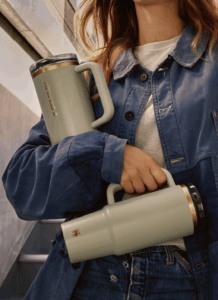Refresh. Repeat. Regret? The Scarcity Marketing Trap
Published on October 21, 2025, at 12:45 p.m.
by Maggie Hill
From Stanley cups to sweat sets, it feels like everything disappears faster than we can refresh the page. Scarcity marketing might just be the smartest strategy to drop yet. The truth is, it has become one of the biggest trends brands don’t want us to look too closely at.

Scarcity marketing is designed to make us want things simply because they seem hard to get. By limiting supply and boosting promotion, brands create a sense of urgency which results in faster sales. At this point, it’s almost like every day is Black Friday. The rush, the stress and the thrill of trying to snag something before it’s gone has become a normal part of how we shop today.
But here’s the real question…do we actually want these things, or are we just reacting to the pressure to keep up? The line between genuine interest and the fear of missing out (FOMO) gets blurry fast when everything feels like a race to buy before it’s gone.
Scarcity marketing is everywhere, from fashion drops to concert tickets and even insulated tumblers. The pressure to always have the latest and greatest never really stops. Sure, it keeps brands on top, but it leaves the rest of us stressed out and constantly feeling one drop behind.
This past February consumers were lining up outside of Target before doors even opened to get their hands on the new limited edition pink Valentine’s Day Stanley cups. This, unfortunately, is probably why it’s best to keep the drops online. Consumers were ripping cups off not only the shelves, but out of peoples arms and carts.

This type of marketing is quickly changing consumer habits. People are now buying fast without even thinking. All for what? I have personally fallen into this marketing trap. I have the same sweatshirt in about eight different colors. Sounds crazy, I know but it’s addicting. The thrill of sitting on a website minutes before a drop is exhilarating and feels even better when you “win”.
On the other hand, this can make consumers feel frustrated, leaving terrible reviews when they are unable to get their hands on the latest drop. Which makes me wonder, how much of these products are actually limited?
It’s a question we might never really get an honest answer to. Most of the time, consumers are left guessing, trusting that brands mean it when they say something is “limited.” But the truth is, very few companies actually share how many pieces are released in a drop. For all we know, there could be hundreds or even thousands of items still out there. The unknown is part of the appeal, and maybe that’s exactly how brands want it.
Maybe it’s time for consumers to rethink the rush. Is the constant pressure and fear of missing out really worth it when we don’t even know how limited these products actually are? Shopping used to be something fun and relaxing, now it feels more like a marathon. Maybe it’s time to slow down and ask ourselves, do I really want this, or do I just not want to miss out?




